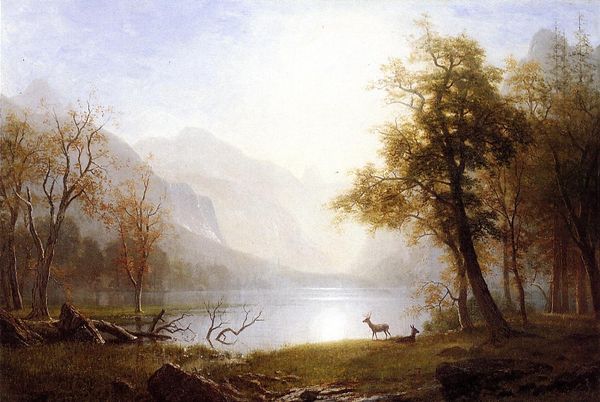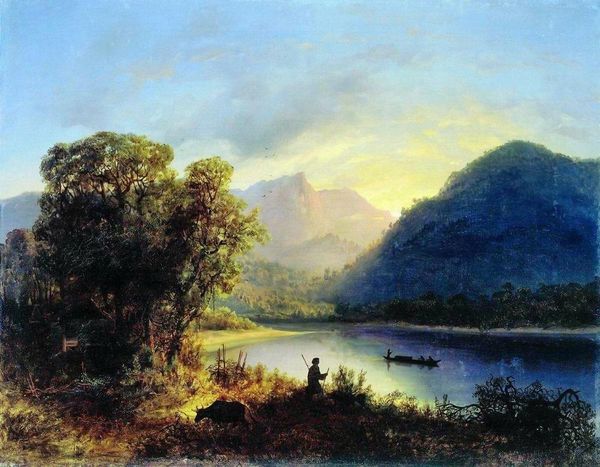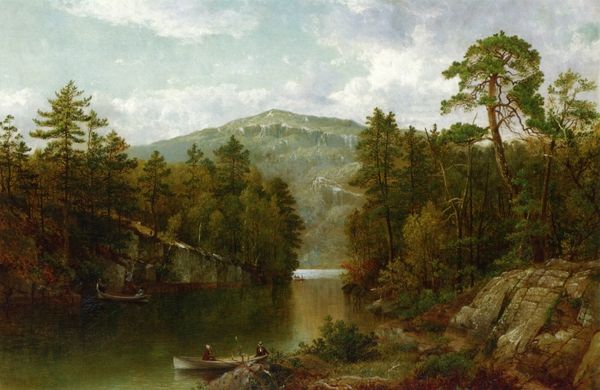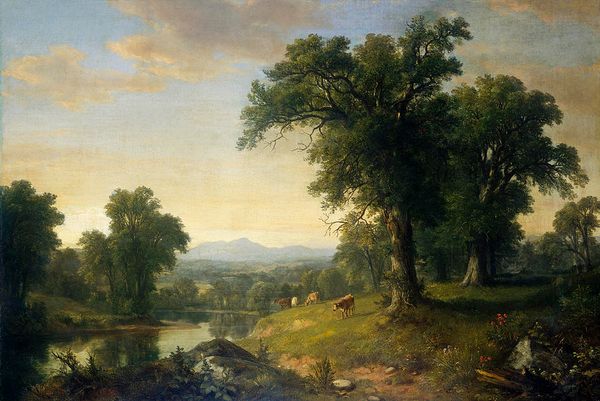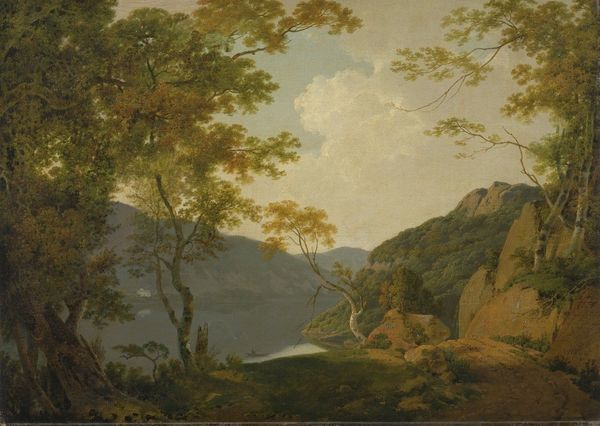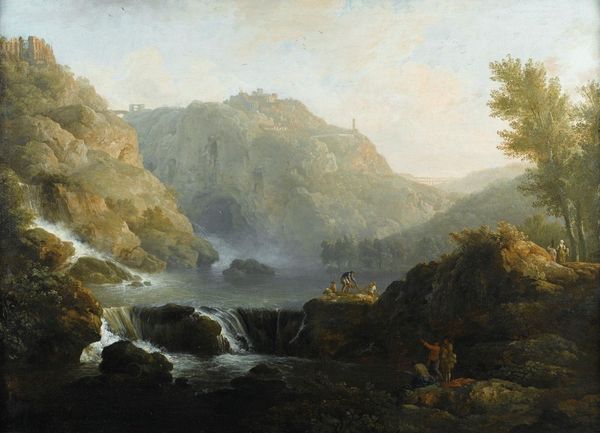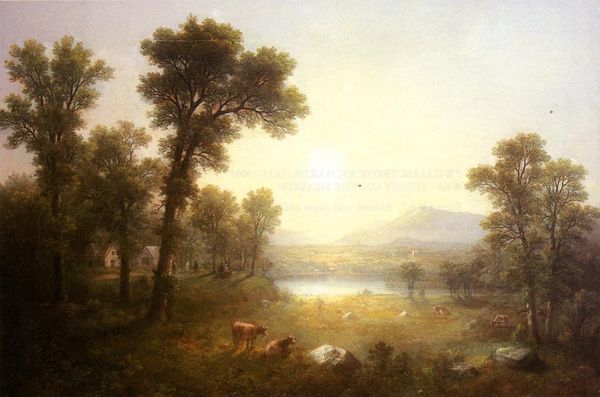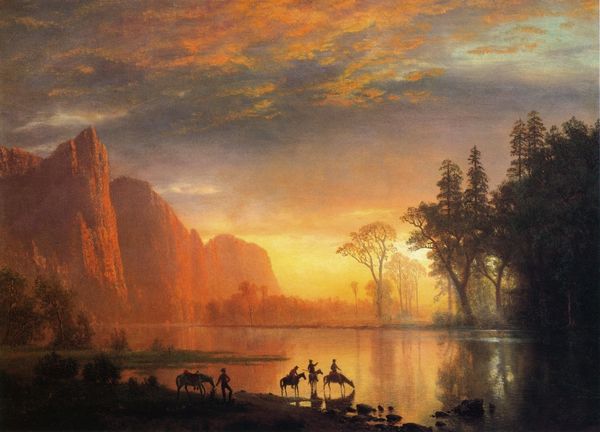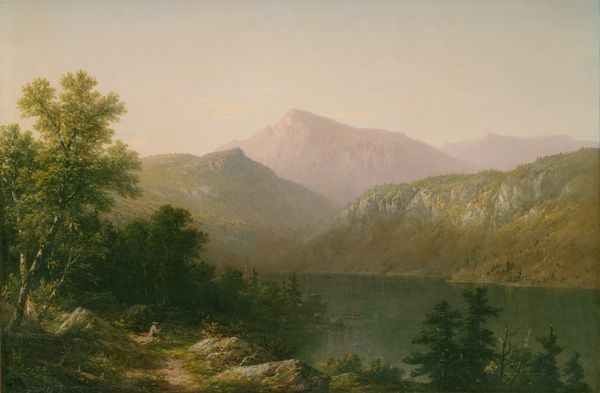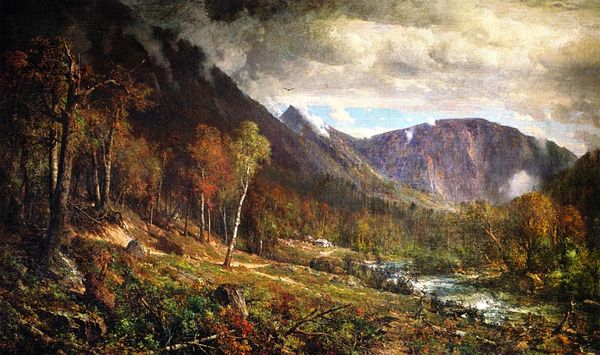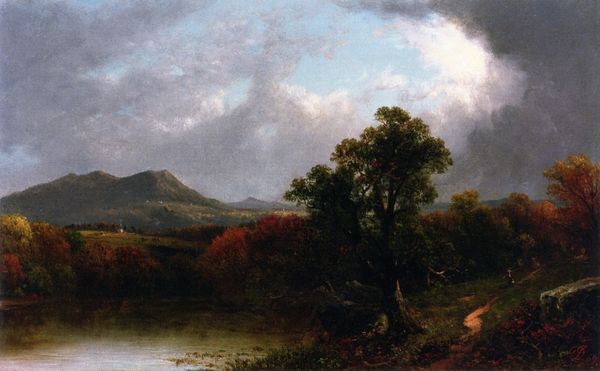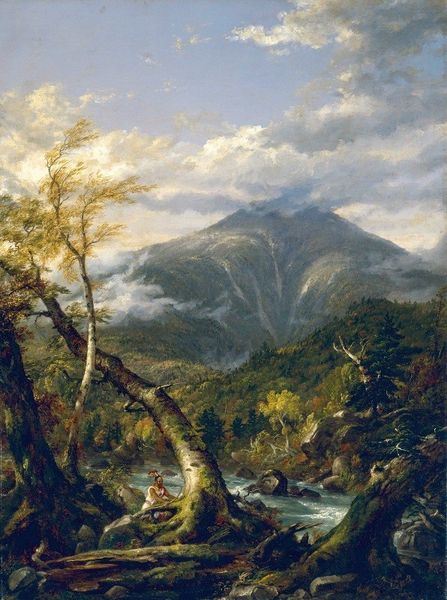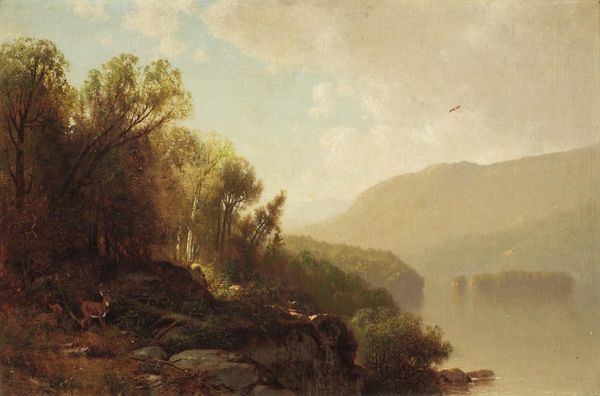
Copyright: Public domain
Editor: "Deer in the Adirondacks," painted in 1878 by William Hart, is rendered with impressive detail using oil paint. It immediately evokes a sense of tranquility, with the deer posed serenely against the backdrop of the Adirondack mountains. How does this work fit into the artistic landscape of its time? Curator: Well, considering its placement within the Hudson River School movement, this painting participates in a very specific construction of the American landscape. The deer aren't just there for aesthetic value. How might the depiction of these deer contribute to a national narrative about nature and wilderness in the late 19th century? Editor: I suppose that depicting them highlights the ‘untouched’ beauty of the American landscape, emphasizing its wildness and natural resources at a time of rapid industrialization? Curator: Exactly. The Hudson River School was deeply invested in promoting the idea of American exceptionalism through its landscapes. The deer become symbols of a pure, unspoiled America, ripe for the taking, and how do you see the role of exhibiting institutions? Editor: Oh, right! Exhibiting these kinds of landscapes, with an emphasis on national identity, almost encourages and legitimizes expansion and resource extraction, framed as a natural right, right? The composition isn’t just beautiful; it's political. Curator: Precisely. Think about how the very act of framing and displaying this landscape reinforces certain power dynamics, subtly suggesting who has access to and control over this “wilderness.” It reflects and shapes public perception. Editor: I had never considered that what appears as appreciation could simultaneously promote such problematic notions. Thank you! Curator: My pleasure! It's vital to remember that art exists within – and actively shapes – its socio-political context.
Comments
No comments
Be the first to comment and join the conversation on the ultimate creative platform.
